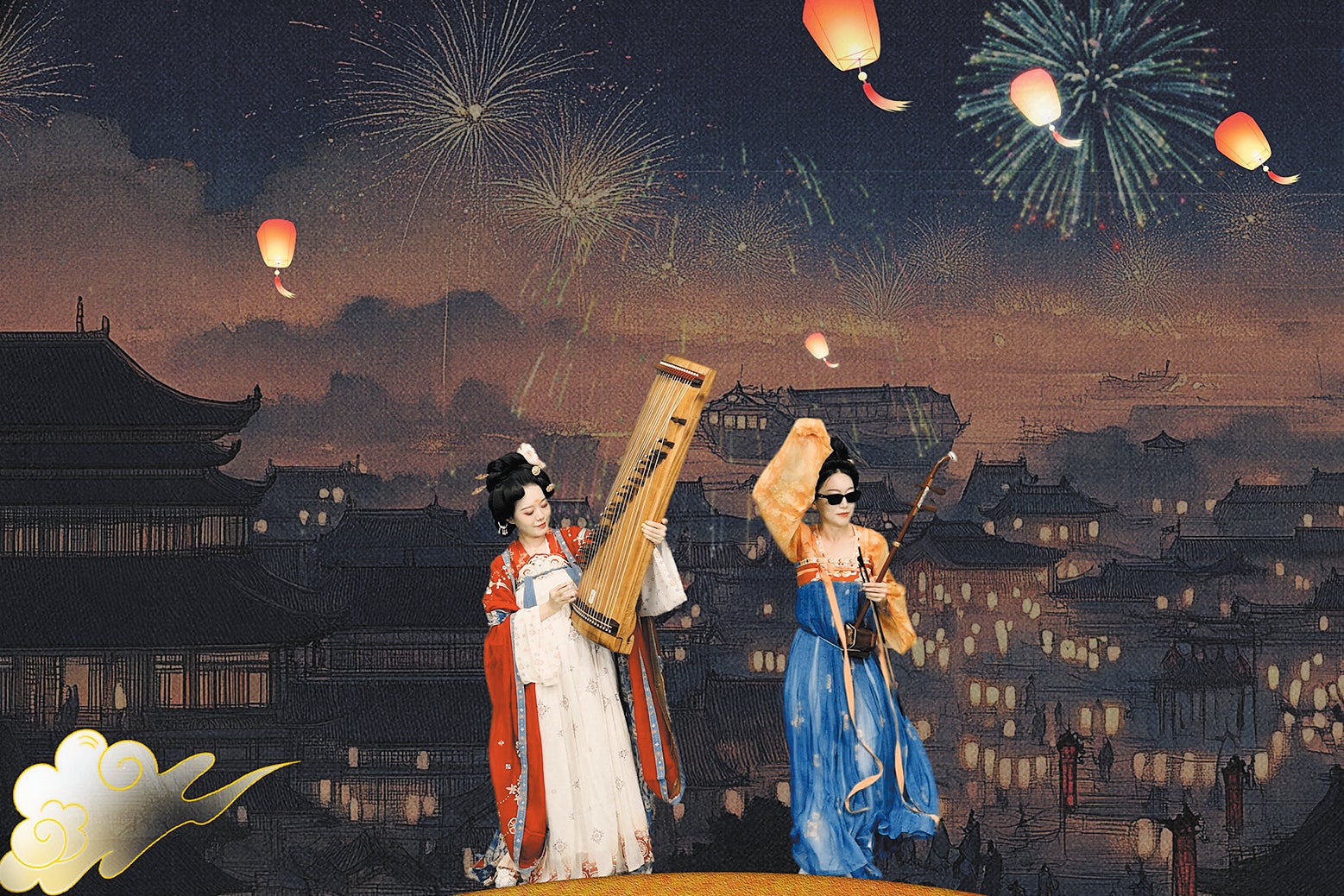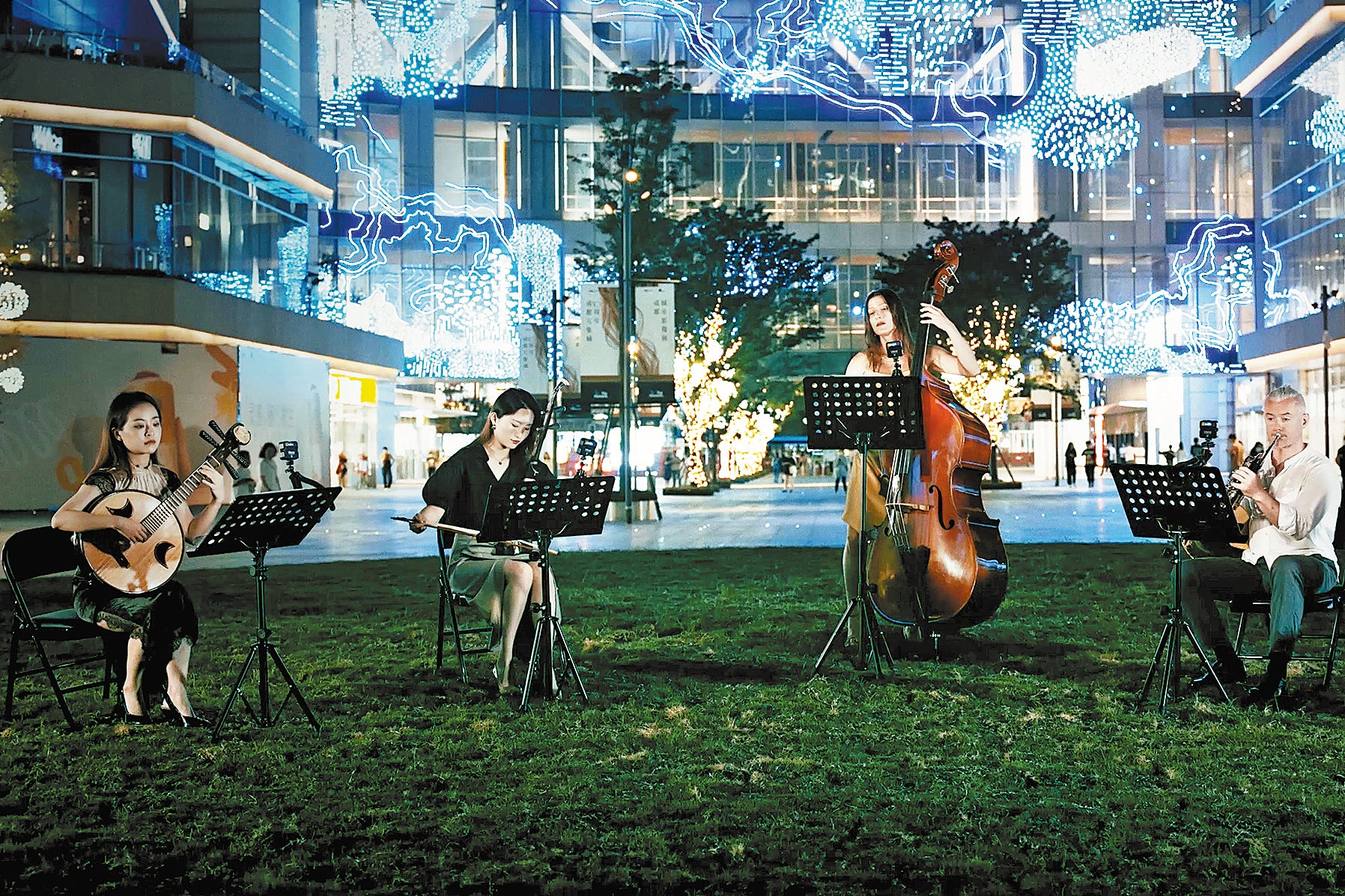Ancient, modern elements in harmony for new generation
THE ARTICLES ON THESE PAGES ARE PRODUCED BY CHINA DAILY, WHICH TAKES SOLE RESPONSIBILITY FOR THE CONTENTS

In a sleek recording studio, young Chinese musicians are gathered around their instruments. Clad in traditional hanfu — flowing robes with wide sleeves and intricate headpieces — they are preparing to create music, but there’s a twist.
These musicians are not playing electric guitars or synthesisers, despite their rock-star aura and sunglasses. Instead, their hands grasp ancient Chinese instruments, including the erhu (a two-stringed fiddle), guzheng (a Chinese zither), suona (a piercing double-reed woodwind) and the zhongruan (a lute).
The studio pulses with energy as they prepare to reimagine a popular song from the 1990s and transform it into a piece that bridges ancient and modern worlds.
Their rendition, aptly titled Disco Dancing Version of Your Shining Knight, revives Hong Kong singer-actor Hacken Lee’s 1991 Cantonese hit, which resurfaced in popular culture after being featured in the 2018 Chinese comedy Hello Mr Billionaire.
The original version of Your Shining Knight revisited the glitter-ball days of disco. But this new take combines disco beats with the sound of something far older — ancient Chinese melodies.
The musicians pluck their strings and beat their drums, and perform in sync with AI-generated characters based on historical Chinese relics, such as a figurine of a dancer, and a musician from the Eastern Han Dynasty (25-220).

They are part of a larger movement sweeping China that celebrates the rising popularity of guofeng music — a Chinese style that uses elements from traditional culture.
As part of a video series called Crazy Folk, participating artists have released over 300 music videos since October 2020, featuring more than 200 Chinese musicians who give fresh life to pop songs through the distinctive sound of traditional Chinese instruments.
These videos have travelled beyond Chinese music fans to reach international audiences via YouTube and other media platforms.
“These videos still give me goose bumps!” a viewer from Nepal, Banaz Gurung, commented on YouTube, reflecting the emotional impact of this innovative project.
Behind Crazy Folk is a talented group of young musicians in their late 20s and early 30s, all classically trained at prestigious music conservatories.
Li Haoyan, one of the project’s core team members, said the appeal of traditional Chinese music lies not only in its distinctive sound, but also in the aesthetic beauty of the instruments themselves.
“Traditional Chinese music is incredibly expressive,” said Li. “The instruments evoke powerful emotions, and visually, they are captivating to modern audiences.”
Young people in China are increasingly drawn to their cultural heritage, seeking to reconnect with traditional values in a world being rapidly shaped by globalisation, she added.
The team’s mission is not just to preserve these ancient sounds but to breathe new life into them through technology. By using artificial intelligence and storytelling, they are creating new ways to present traditional music and incorporating history, museum artefacts, and cultural relics into their performances.
For Xue Yiying, a 26-year-old erhu player from Chengdu, Sichuan province, performing traditional music in a modern context feels both nostalgic and fresh. “I grew up playing the erhu, learning the instrument from my grandmother, who was passionate about traditional Chinese music,” Xue recalled.
The erhu, often described as China’s answer to the violin, is known for its hauntingly beautiful tone and is capable of expressing a wide range of emotions.
“I used to play it in the typical, softer style,” Xue said, “but Crazy Folk opened my eyes to a whole new way of performing. We’re taking songs that people already love and giving them a new twist.”
Xue explained how playing a well-known pop song on an ancient instrument like the guqin or pipa injects new life into the piece. “It’s like rediscovering something familiar in a completely new way,” she said.
“These instruments are timeless. Our goal isn’t just to preserve tradition but to show how these instruments, some over 1,000 years old, can still move and inspire audiences today — especially younger generations who may never have paid attention to them before.”
